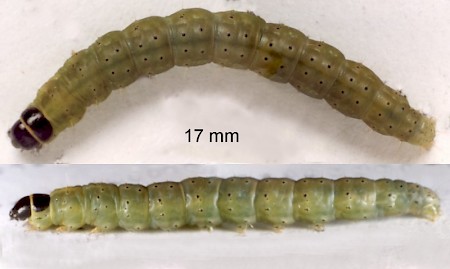32.015 BF692
Agonopterix subpropinquella
(Stainton, 1849)
Wingspan 16-22 mm. A fairly common species throughout much of England and Wales, becoming scarcer into Scotland and Ireland.
It can be confused with other species such as A. propinquella, and is usually best identified by dissection. The form rhodochrella is more distinctive, with darker head and thorax, and more prominent wing markings.
The larvae feed on knapweed (Centaurea spp.) or thistle (Cirsium), and the adults emerge from August, hibernating over the winter. They can sometimes be encountered until the following May.
- Larva: (description Ian F. Smith):
Foodplants: June - July (or early August) on Centaurea, Cirsium, Arctium and, on mainland Europe,Onopordum and Carduus. Initially, in a leaf mine. Later, under a web on the underside of a leaf, or in leaf of Centaurea rolled upwards.
Late instar larva
Length: 17 mm described
Head: Black.
Prothorax (T1): Anterior border greenish yellow. Prothoracic shield black.
Thoracic legs: Light brown
Body: Dull green or greyish green. Slightly paler ventrally. Contractile vessel shows faintly as darker dorsal line. Ill defined slightly darker dorso-lateral line. (Early instar body pale yellow or amber. MBGBI 4-1)
Spiracles: Black.
Pinacula: Black.
Setae: Translucent yellowish.
Anal plate: Translucent paler green than body, with some darker spots.
Prolegs: Basally concolorous. Planta paler.
Comment: The black pinacula distinguish late instar A. subpropinquella from A. propinquella and early instars of A. carduella. The writer does not know if early instar A. subpropinquella have black pinacula. If they do not, they could be confused with these two species. It is advisable to rear small larvae to over 10 mm, or to imago.

 UKMoths
UKMoths 




